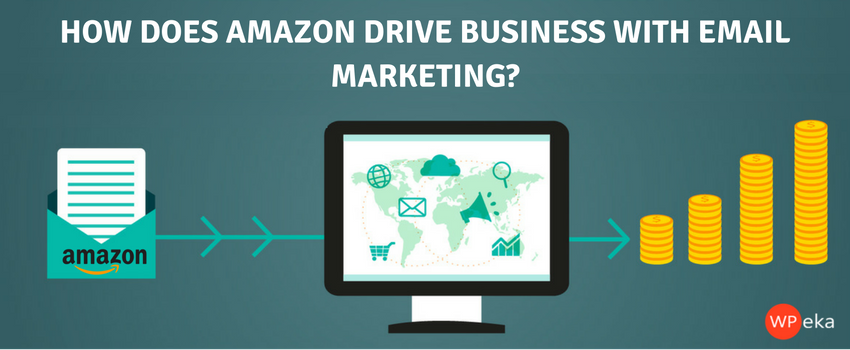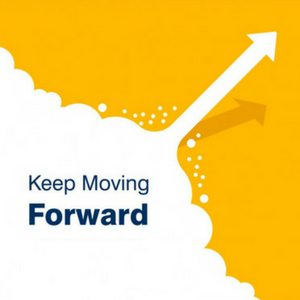How does Amazon Drive Business with Email Marketing?

If you’ve ever purchased something from Amazon, or even just created an account on the site, you know that Amazon is all about email marketing. Obviously, the company has put tons of effort into marketing automation and is truly at the forefront, one of the innovators, when it comes to email marketing best practices. To back up these efforts, and often to accompany these efforts, the company has mastered the process of online buying, making it as smooth and nearly effortless as they can.
The Amazon Empire is probably the envy of any small business when it comes to striving to gain customers, keep customers, and stay far ahead of the competition. Amazon’s email tactics are well thought out, well backed by automation, and thus, they can actually cause you to buy more willingly; the Holy Grail for most small business email marketing campaigns.
Here are a few insights for you on what Amazon does and why it is successful.
 Serious Segmentation
Serious Segmentation
No matter how big or small your email database is you should be segmenting. Amazon would never send all of their customers the same marketing email, and neither should you. Taking the time to segment is well worth it to help ensure that the right type of content is getting to the right customer at the right time. And, there’s plenty of data to back up a case for taking the time to segment your email list for targeted campaigns. For instance, according to eConsultancy, personalized email marketing campaigns can increase customer engagement by up to 74%.
TIP: You can take a stab at segmentation based on any criteria, such as your customer’s previous purchases or their location. The important point is to begin the all-important targeting process.
 Always Strive to Improve the Experience – And There’s a Bonus
Always Strive to Improve the Experience – And There’s a Bonus
Your customers know when you care, and Amazon has figured that out. A few days after you purchase a product through Amazon, you will usually receive an email about the product. The waiting period before contacting you is intentional and intended to give you time to use or wear the product. This gives you time to really experience the product before they send you a survey about that experience.
Once your item ships, Amazon uses an easy question to gauge your satisfaction. An email simply asks if the order arrived and the date. Customers don’t seem to mind answering these types of easy questions. That’s because they know, or at least assume, that the answers are used to create a better experience.
TIP: A simple email asking customers to rate whether they like or don’t like your product or service, and by how much, is an effective way to gauge the satisfaction or dissatisfaction of your customers.
One easy way to do this is to keep it simple by using a binary question email.
And, Amazon double-dips on these responses by displaying them on their website. Their email marketing campaigns double as content creation vehicles! Customers who see real feedback posted on the site can be more engaged and likely will keep buying from you as they feel part of the relationship.
 Knowing Your Customers is the Best Way to Increase Your Own Business
Knowing Your Customers is the Best Way to Increase Your Own Business
Part of creating a valuable experience for your customers is listening to what they have to say. Amazon seeks customer input through many channels, not just product rating emails. They gather information from their own data that is then personalized for each customer.
For instance, Amazon will use information from web browsing, customer purchase history, and actual feedback through surveys and customer service to tailor emails in a way that may just hit on the reader’s needs and wants. In fact, that is just what Amazon is attempting to do: predict customer’s needs and wants.
Amazon really gets to know their customers. Amazon emails are not the same, or even similar, for all of their customers and often suggest items based on recent purchases and other data. If you’re sending out the same generic “sale” email to everyone, how are they going to feel like you really know them?
TIP: Use segmentation and craft personalized emails for various groups of customers. Start with something easy and then measure the results as compared to previous non-targeted email campaigns.
 Create Buzz, Then Use the Data
Create Buzz, Then Use the Data
When Amazon came up with the idea for Amazon Prime Day, a manufactured holiday designed to give lackluster summer sales a boost, it ran an email campaign to 3.6 million subscribers and had a read rate of 27.35%. Not only that, the company reported U.S. sales were up 93 percent following the July 15th event.
This is huge! One of the keys to success was their effective use of headlines, which included the cryptic and simple command, “Mark Your Calendars for July 15.” This created buzz, because who didn’t want to open this email and find out what was happening on July 15th? A good number of people did.
Once Amazon Prime Day was over, Amazon then had a wealth of data about a naturally segmented portion of their base: those that engaged for Amazon Prime Day. Now the company could take the next step and analyze the data to try to determine what motivated these customers and to predict how they could further engage them.
TIP: After an event, don’t miss the opportunity to really understand your customers who participated. Take the time to draw up an action plan for moving forward and continuing the relationship.
 Stay in Touch
Stay in Touch
It’s easy to think of email marketing in terms of campaigns, but this can also be a trap. A campaign has a beginning and an ending, which is great for analytics but not so great for customer interaction. There are a couple of ways to counter this problem.
TIP: When building your marketing calendar make sure that when one campaign ends, another fills the void. Consistency is what will win the race. When customers repeatedly see your emails and like what you have to offer, there will come a time when they perform the way you want them to.
Another way that Amazon stays in touch with its customers is by checking in with them. Using analytics and some clever internal metrics, Amazon makes it easy for you to buy more. There’s a chance, that yes, the customer does need more printer ink after two months have passed since their purchase. And, by including a purchase link directly in the email, Amazon makes it easy and efficient for the customer to buy from them again, and often again and again.
TIP: Circle back with the customers who responded to your campaign with a purchase. It can be as simple as asking, “Do You Need Some More?” in the headline.
 Email Marketing Has Never Gone Away
Email Marketing Has Never Gone Away
In the marketing world, there were some rumblings that email marketing was dying, but there are no strong numbers to bear this out. In fact, according to Smart Insights, marketers surveyed rated email marketing as the most effective form of digital marketing.
Though inboxes are more crowded than ever, adopting and adapting a few tactics from Amazon is a great start to having your emails cut through the noise.
Please comment to tell me how did you like Amazon’s strategy to drive business with Email marketing.

 Serious Segmentation
Serious Segmentation Always Strive to Improve the Experience – And There’s a Bonus
Always Strive to Improve the Experience – And There’s a Bonus Knowing Your Customers is the Best Way to Increase Your Own Business
Knowing Your Customers is the Best Way to Increase Your Own Business Create Buzz, Then Use the Data
Create Buzz, Then Use the Data Stay in Touch
Stay in Touch Email Marketing Has Never Gone Away
Email Marketing Has Never Gone Away
Leave a Reply